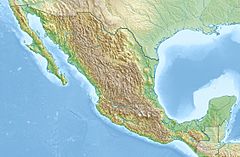Longnose bromeliad salamander facts for kids
Quick facts for kids Longnose bromeliad salamander |
|
|---|---|
| Conservation status | |
| Scientific classification | |
| Synonyms | |
|
Dendrotriton megarhinus, also called the longnose bromeliad salamander, is a special type of salamander. It belongs to the Plethodontidae family. This salamander lives only in one small area of southwestern Chiapas, Mexico. It is known only from a place called Cerro Tres Picos.
What Does the Longnose Bromeliad Salamander Look Like?
Scientists have studied eight of these salamanders. Male salamanders are about 25–33 mm (0.98–1.30 in) long from their snout to their vent. Females are a bit smaller, measuring about 23 and 26 mm (0.91 and 1.02 in) from snout to vent. The "snout-vent length" is a way to measure an animal's body without including its tail.
The tail of this salamander is usually as long as its body, or even a little longer. The longest one found was 72 mm (2.8 in) in total length. This salamander has a long snout and very big nostrils. Its scientific name, megarhinus, actually means "big nose." Its body is thin and slender. Its toes have wide tips and some webbing between them.
Where Does It Live and How Is It Protected?
The longnose bromeliad salamander lives in cloud forests. These forests are found high up, about 2,000 m (6,600 ft) above sea level. It makes its home inside bromeliad plants that grow on the ground.
In the 1970s, this salamander was common in its small home area. However, scientists do not have much recent information about it. There are no direct threats to this species right now. But because it lives in such a small area, it is vulnerable to unexpected problems. This means a single big event could harm many of them.
The longnose bromeliad salamander is protected by law in Mexico. It also lives inside the La Sepultura Biosphere Reserve. This special area helps protect its habitat.



